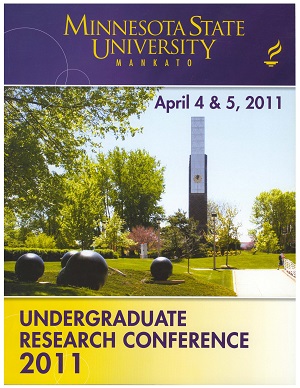Event Title
Research and Testing of Emissions Reductions and Fuel Economy for a Small On-Road Diesel Engine in a Hybrid Vehicle
Location
CSU 204
Start Date
4-4-2011 1:30 PM
End Date
4-4-2011 3:00 PM
Student's Major
Automotive and Manufacturing Engineering Technology
Student's College
Science, Engineering and Technology
Mentor's Name
Bruce Jones
Mentor's Department
Automotive and Manufacturing Engineering Technology
Mentor's College
Science, Engineering and Technology
Description
The Environmental Protection Agency has been reducing the allowable emissions of on-road diesels engines significantly over the past decade causing the production of small diesel economy vehicles to be cost prohibitive. The Smart ForTwo with a small diesel engine is one of the vehicles not permitted for use in the United States because it is unable to, or not cost effective to meet the current emissions standards. The Department of Automotive Engineering Technology at Minnesota State, Mankato has installed a Smart ForTwo diesel engine in a student designed and constructed three wheeled hybrid vehicle identified as Tribrid. One primary goal of the project was to meet diesel emission standards, and achieve a fuel economy rating greater than 100 mpg. Baseline emissions testing of a Smart ForTwo was conducted by a senior design group in 2008. To fully understand the effects of vehicle weight reduction and installation of a catalytic converter in the exhaust system, several emissions tests were completed by the Tribrid senior design group. Emission testing primarily consisted of two parts; testing the vehicle at its final estimated curb weight with a driver, and then again with the addition of a catalyst in the exhaust. Both parts were measured driving an Environmental Protection Agency standard city drive cycle and highway drive cycle. Results of fuel economy and emissions showed reductions of emissions while increasing fuel economy.
Research and Testing of Emissions Reductions and Fuel Economy for a Small On-Road Diesel Engine in a Hybrid Vehicle
CSU 204
The Environmental Protection Agency has been reducing the allowable emissions of on-road diesels engines significantly over the past decade causing the production of small diesel economy vehicles to be cost prohibitive. The Smart ForTwo with a small diesel engine is one of the vehicles not permitted for use in the United States because it is unable to, or not cost effective to meet the current emissions standards. The Department of Automotive Engineering Technology at Minnesota State, Mankato has installed a Smart ForTwo diesel engine in a student designed and constructed three wheeled hybrid vehicle identified as Tribrid. One primary goal of the project was to meet diesel emission standards, and achieve a fuel economy rating greater than 100 mpg. Baseline emissions testing of a Smart ForTwo was conducted by a senior design group in 2008. To fully understand the effects of vehicle weight reduction and installation of a catalytic converter in the exhaust system, several emissions tests were completed by the Tribrid senior design group. Emission testing primarily consisted of two parts; testing the vehicle at its final estimated curb weight with a driver, and then again with the addition of a catalyst in the exhaust. Both parts were measured driving an Environmental Protection Agency standard city drive cycle and highway drive cycle. Results of fuel economy and emissions showed reductions of emissions while increasing fuel economy.
Recommended Citation
Zurbey, Zach; Steve Loewen; and Timothy Werts. "Research and Testing of Emissions Reductions and Fuel Economy for a Small On-Road Diesel Engine in a Hybrid Vehicle." Undergraduate Research Symposium, Mankato, MN, April 4, 2011.
https://cornerstone.lib.mnsu.edu/urs/2011/oral-session-08/5



